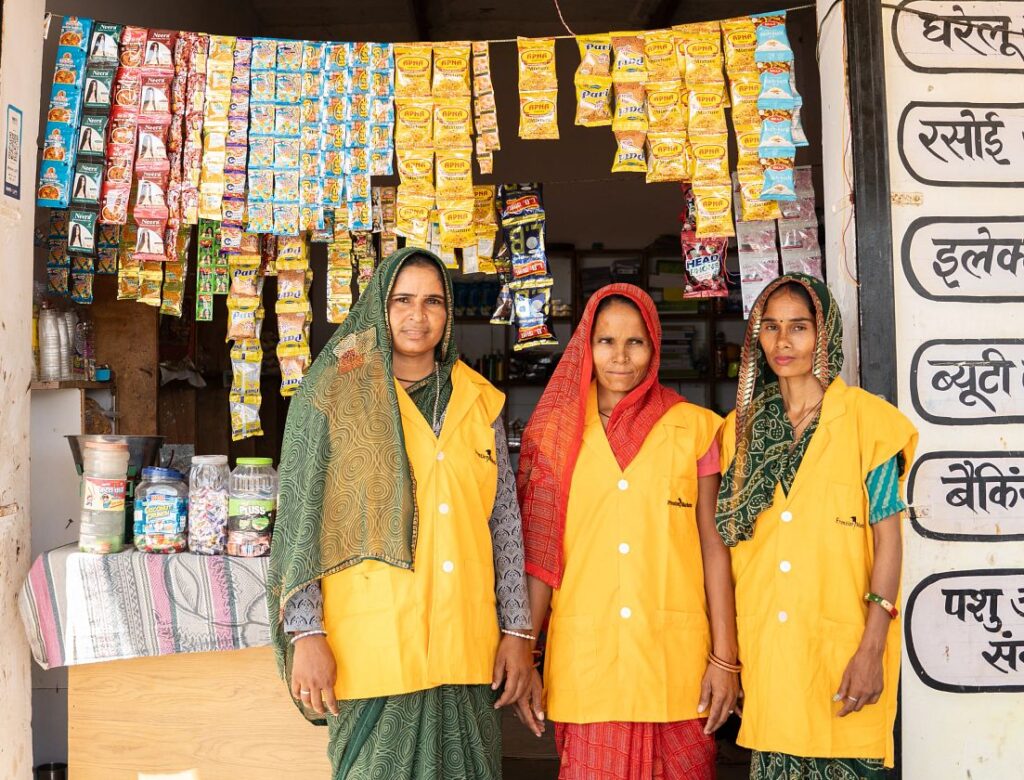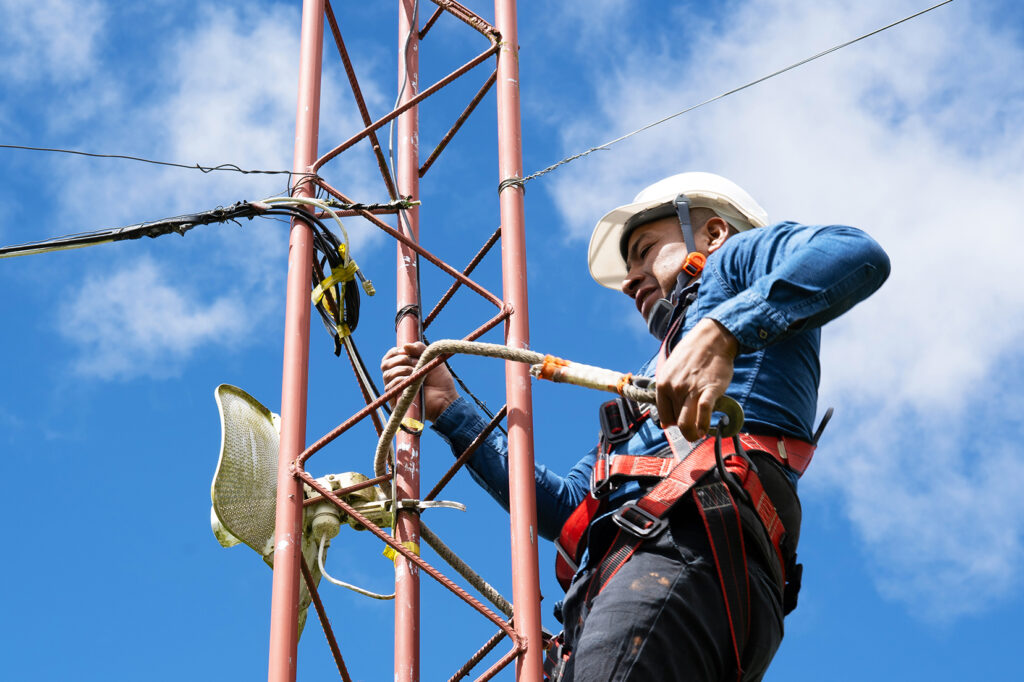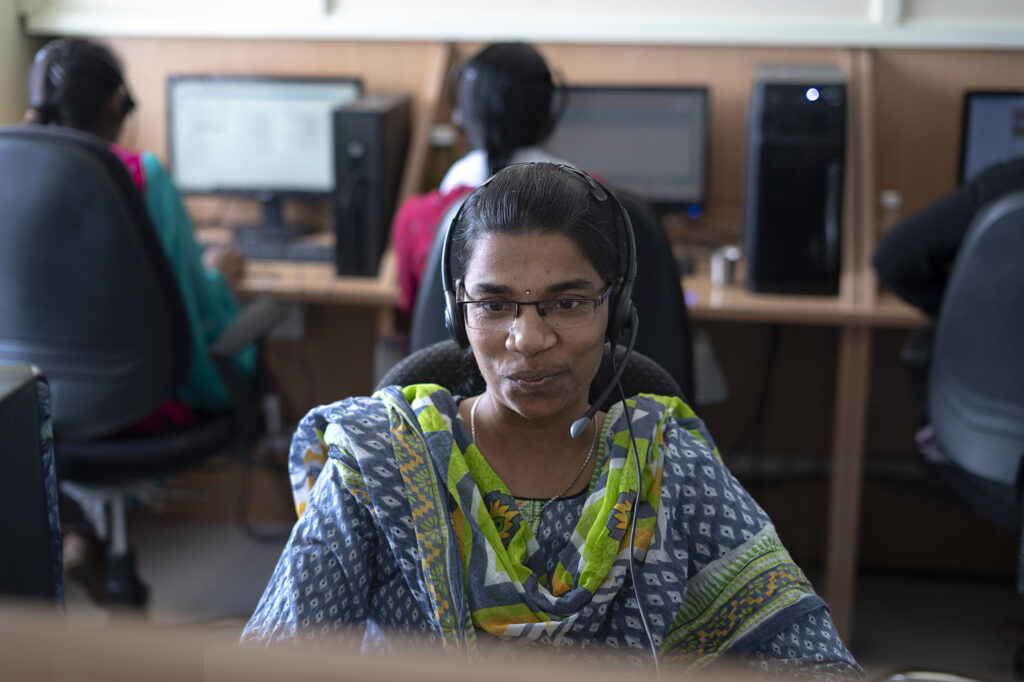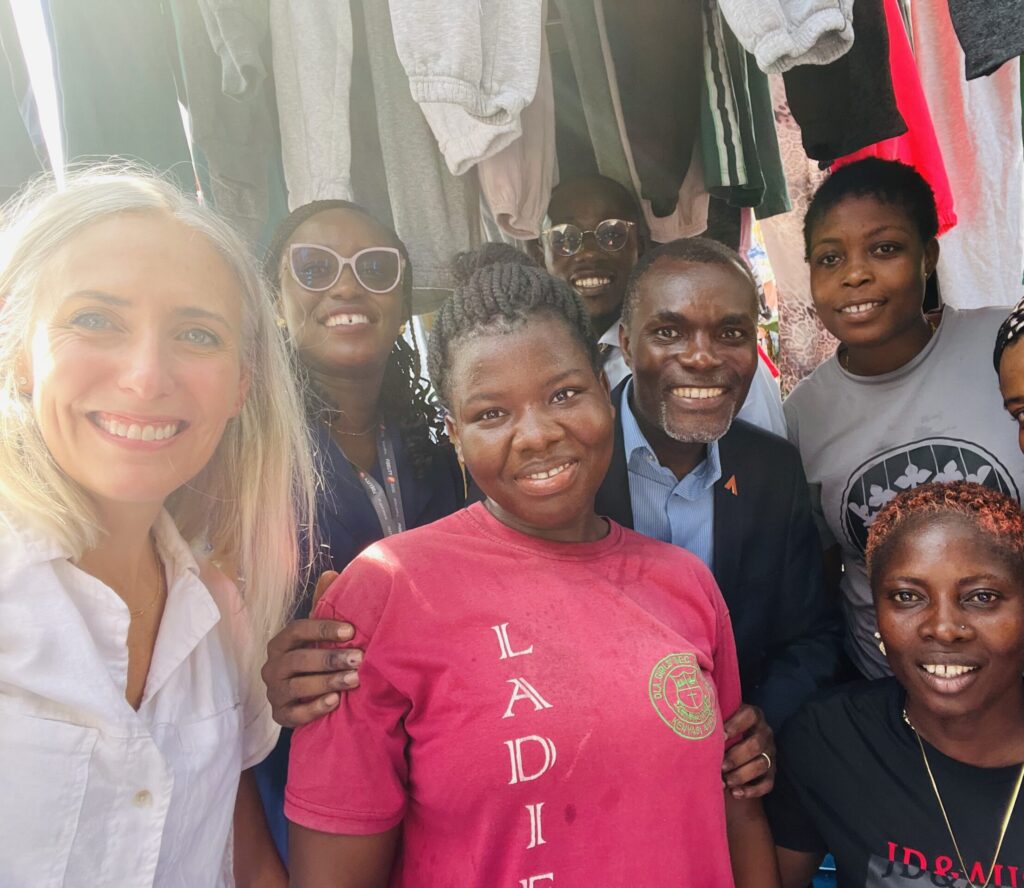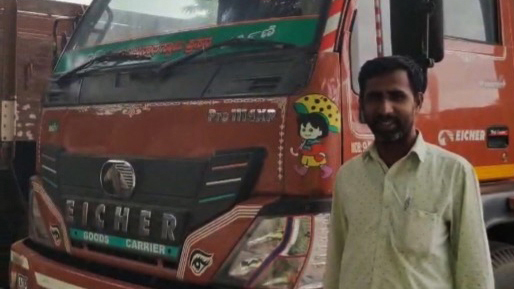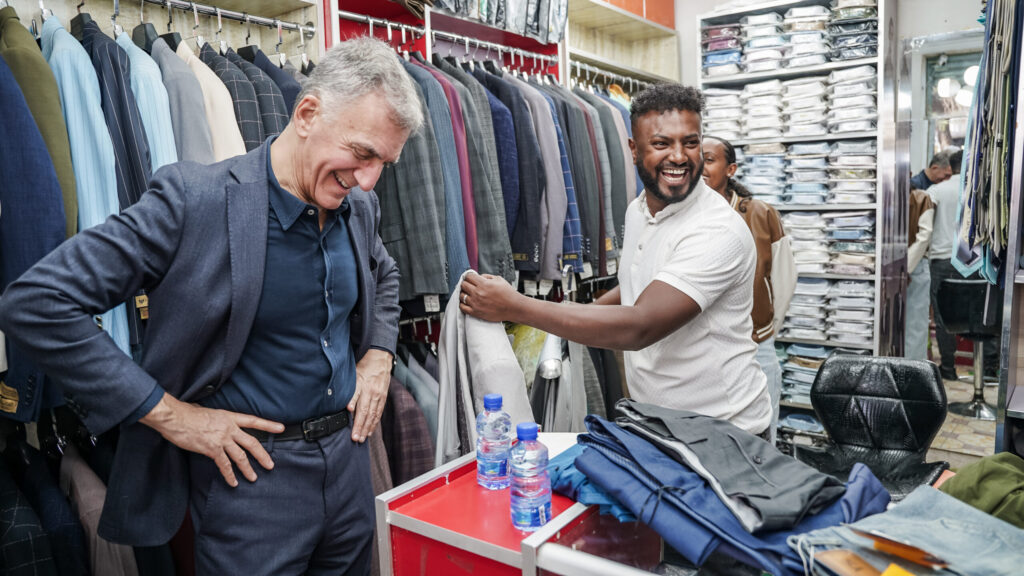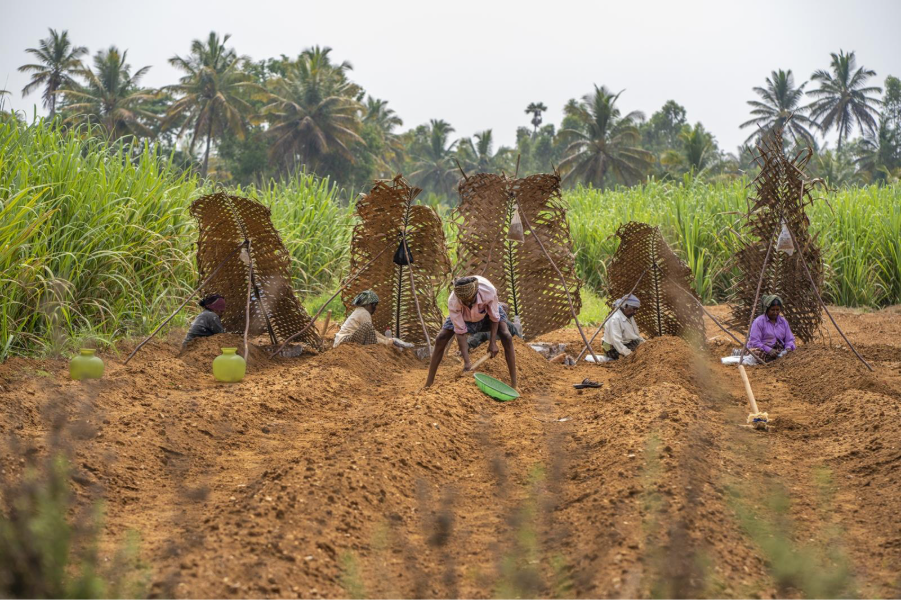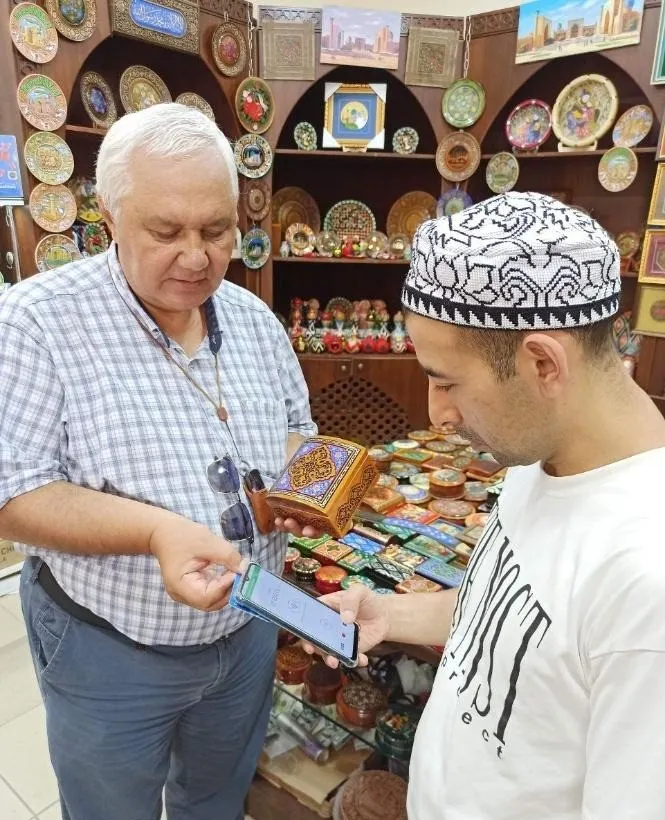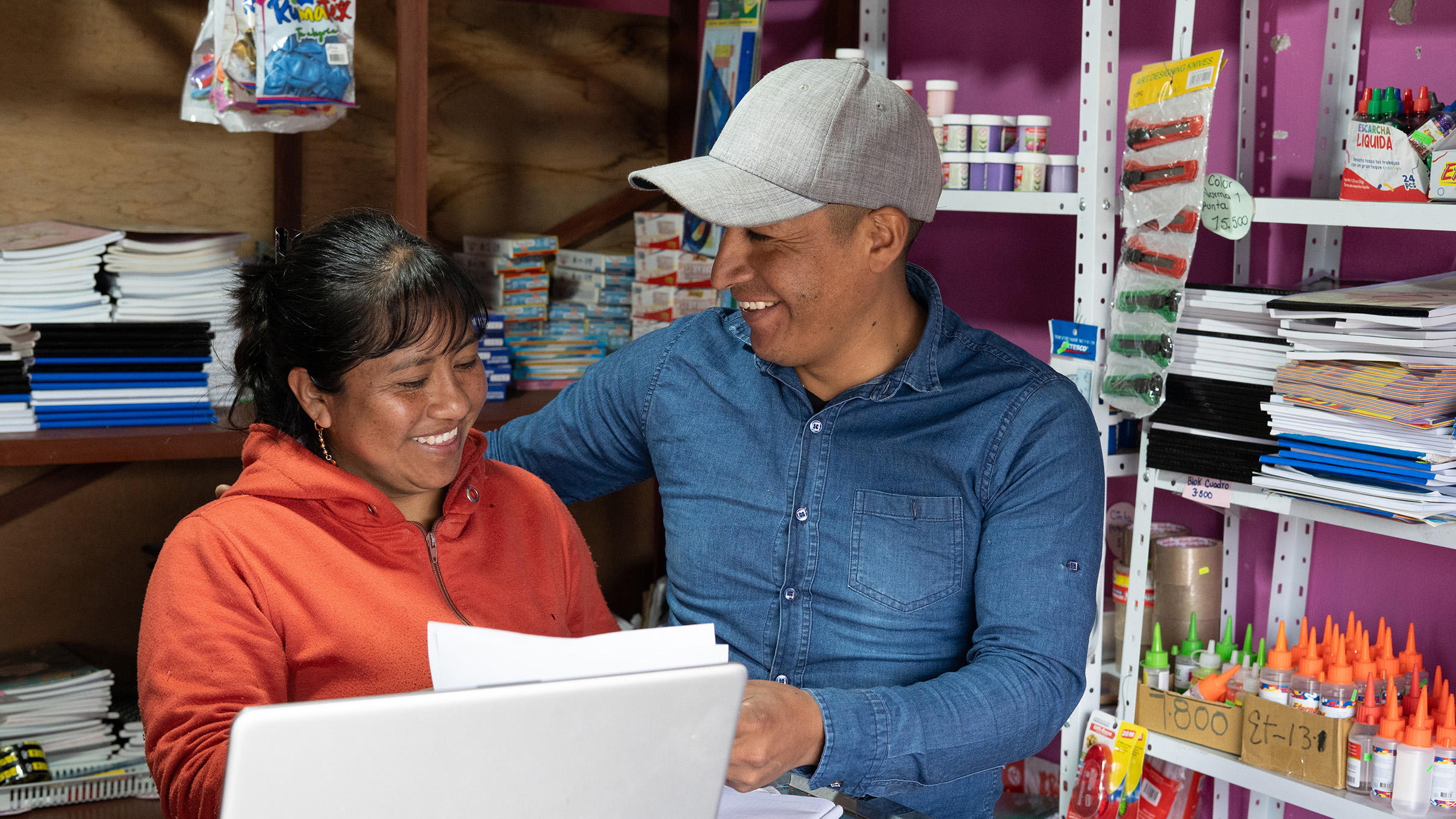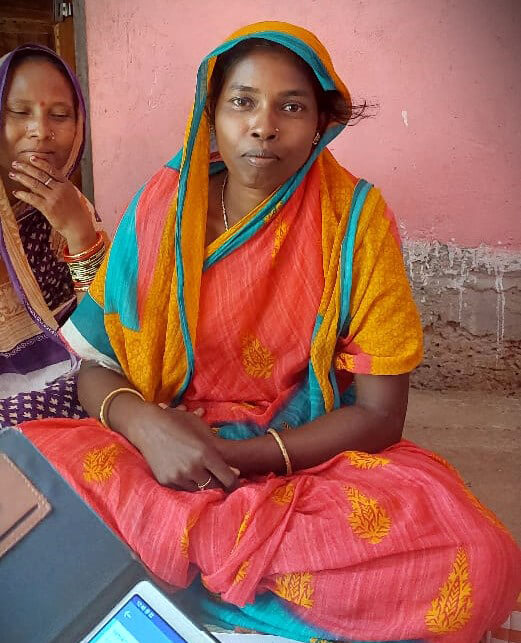
Sanjukta is the sole breadwinner for her family. She is extremely enterprising and runs a small grocery shop and works as a community helper at an Anganwadi, a government-sponsored rural childcare center, in Bhubaneshwar. To get the resources needed to open and run her business, Sanjukta has been a group loan customer for more than twelve years.
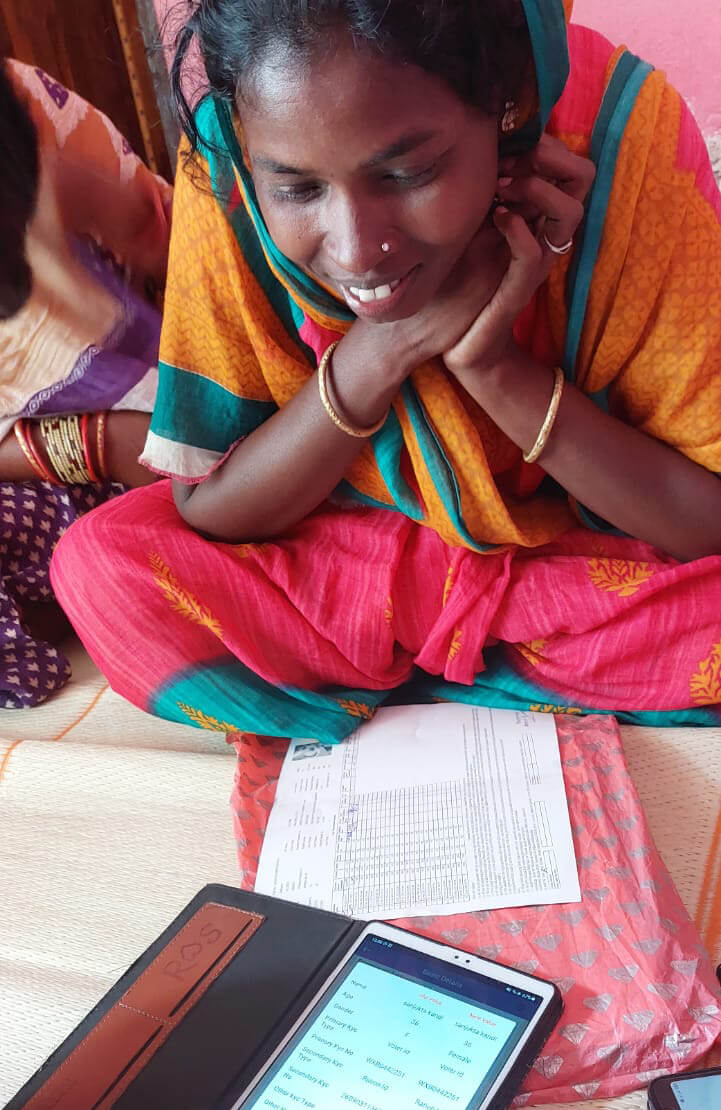
During countrywide lockdowns to prevent the spread of COVID-19, the microfinance institution from where Sanjukta avails of her loans had to shut down their branches. Her loan officer encouraged her to start paying her monthly installments digitally through an app on her phone. While initially reluctant to do so, she started making her repayments digitally after a lot of handholding and training by her loan officer.
Today, she is confident using the Unified Payments Interface (UPI) app to accept money from her grocery shop customers and to receive her earnings from working at the Anganwadi directly in her UPI-linked account.
In fact, she finds accepting money in her online account to be much more convenient than the earlier process of collecting a check and depositing it at the bank, which is located far away. She is also a trendsetter in her meeting center group and has encouraged two of her group members to start paying digitally as well.
Digital repayment opens opportunities for women in rural areas like Sanjukta to become more comfortable with digital products and to create a digital trail for themselves which can help them to access more financial services in the future.
A NABARD study in 2021 showed that 48 percent of sample clients who paid their monthly installments digitally also started paying their mobile or telephone bill, 40 percent paid their electricity bill through mobile phone, 36 percent accepted digital payments, 18 percent paid merchants through a digital mode, and 8 percent remitted money digitally.
The case for microfinance institutions to promote digital repayment
There has been massive growth in digital payments across India with the huge success of UPI and the increase in smartphone penetration. However, the growth has not been uniform across gender and geographies, with significant differences in uptake between rural and urban India and across gender.
There are various reasons for a comparatively lower intake of digital repayment amongst women, and especially rural women, such as a lack of internet access and device ownership and lower confidence in using digital tools.
Accion’s research shows that women are more likely to depend on guidance and training from peers, family members, and loan officers before using digital payment tools. Microfinance institutions with deep rural distribution and strong customer relationships are ideally positioned to promote digital payments. Digital payments also help microfinance increase efficiency and reduce operational risks.
Under an initiative supported by HSBC India, Accion is working with two large microfinance institutions to encourage customers to repay their loans digitally by building efficient repayment tools, training, and handholding of customers.
As more and more women customers like Sanjukta start paying their group loan installments digitally, they will be able to access more digital financial products and influence other women to follow suit.

